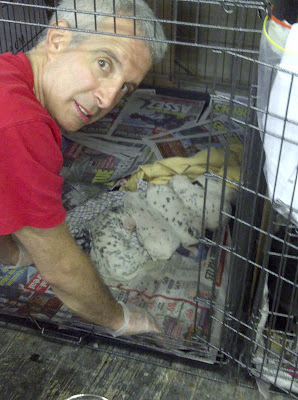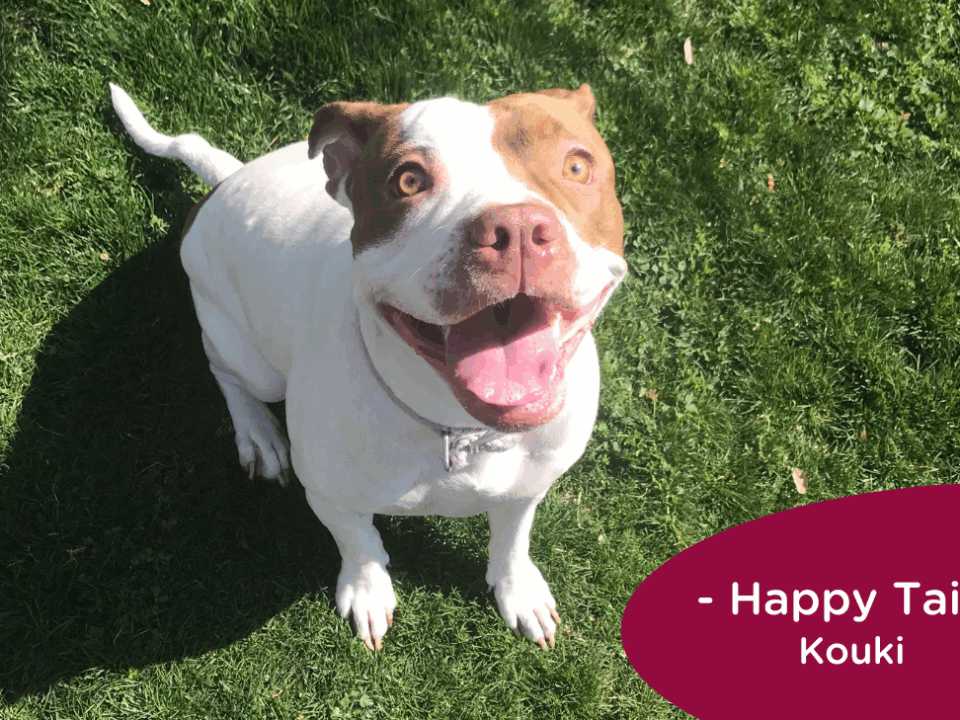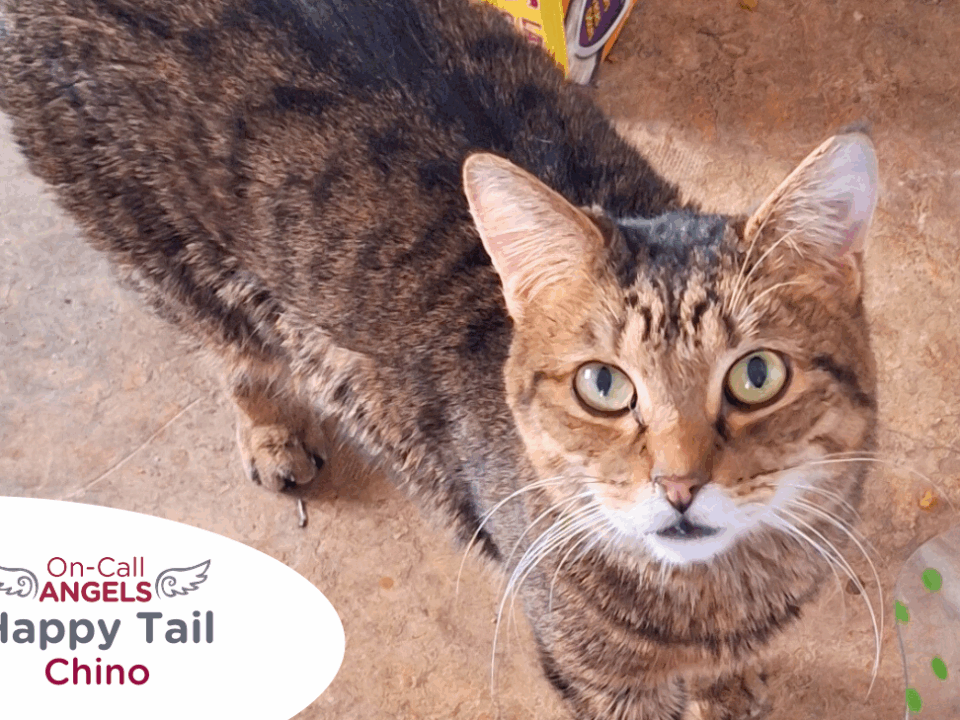Lachute, Québec dog rescue: one year anniversary
September 18th, 2012
By Jennifer Johnston, RedRover Responders volunteer Guest contributor and volunteer Communications Assistant
September 17th, 2011. It was one of the first chilly Autumn nights in Western Québec. Despite being far from city lights and seeing a bright, gorgeous moon rise, it was pitch black at 2 a.m. The only real light we had came from inside the open garage doors of the main emergency shelter building and a few headlamps some well-prepared staff and volunteers were wearing.
We were a group of many colours: lead agency MAPAQ (Ministère de l’Agriculture, des Pêcheries et de l’Alimentation du Québec) staff in cyan blue vests, law enforcement in somber shades of brown and black, Humane Society International (HSI) staff in forest green shirts, medical staff and volunteers in baby blue paper sterile gowns, and RedRover Responders volunteers from Canada and the U.S. in our trademark red shirts.
| Volunteer briefing led by Connie Brooks. |
What brought us together was soon to become a precedent-setting case in Québec, a part of Canada called “the best province [in which] to be an animal abuser” by the Animal Legal Defence Fund in 2011. Coordinated by MAPAQ, local law enforcement, and HSI, over 600 dogs and puppies were about to be rescued from a life of neglect at the Paws R Us breeding facility west of Montréal.
After days of non-stop construction – kennels for breeds of all sizes, a nursery for newborns, whelping rooms for moms about to deliver, isolation areas for the sick, and a clinic space for medical treatment – we waited in the dark between the two temporary shelter buildings for the first truck to arrive. We were told to expect about 150 dogs and puppies in the first wave.
| RedRover Responders volunteers prepare crates for the dogs’ arrival. |
From the moment the truck door opened the group became a focused hive of activity. As dogs were offloaded they were catalogued and deployed to various parts of the shelter depending on their size, age, medical condition, and if they had pups. Looking into the crates as we gingerly carried or carted each one, what we saw was heart-breaking; scared, anxious, tired dogs with a host of medical conditions.
| The anxious, tired dogs suffered from a host of medical conditions. |
“This was not only the largest dog rescue in Canadian history, but it also involved some of the most inhumane conditions that our Animal Rescue Team has ever encountered,” said Lauren Scott, from HSI.
We worked all night and into the morning to finish that first truck. Most of that night is a blur to me now. I recall the over-riding sense of urgency to get these dogs into their temporary homes – not only out of concern for them and wanting to get them into more comfortable conditions, but also because we knew there were more trucks to come and those trucks were going to be just as full.
| Shelter building #2: medium breed dogs. |
Over the next couple of days we unloaded another two full 18-wheelers, with a dash of sleep and a quick bite in between each one. Day blurred into night and back to daylight again. Staff and volunteers seemed tireless as they managed the intake of an astonishing array of breeds; from tiny, delicate, shivering Maltese moms with pups so small they looked like baby gerbils, to huge St. Bernards with skeptical eyes and crates so large they needed a team to carry them, and seemingly every size and breed of dog in between.
| Volunteers provided comfort and care for the scared dogs. |
From the moment a dog was brought into the shelter the virtually-endless cycle of care started and everyone had a list of tasks to keep them busy. Cleaning crates, feeding, providing fresh water, getting dogs and puppies to the vet for assessments, and documenting every step for use in the pending cruelty case against the owners of the breeding facility. This work consumed us for days and often followed us into our dreams at night.
 |
| RedRover Responders volunteer Howard tending to some of the many puppies born before and after the dogs were seized. |
As with all deployments, RedRover Responders volunteers came to Lachute, Québec ready to do whatever necessary to bring animals from crisis to care. One year later, we know we participated in a landmark animal cruelty case that will have a positive impact on generations of animals.
To learn more about the Paws R Seizure, check out these resources:
- Emergency Response Journal – More blog entries from our RedRover Responders deployment.
- Humane Society International (Canada) – Various news releases related to the emergency sheltering operations and the progress of the criminal case.
- Freedom Dogs Unite – A volunteer-created group devoted to sharing stories about the PRU dogs after they left the emergency shelter.



